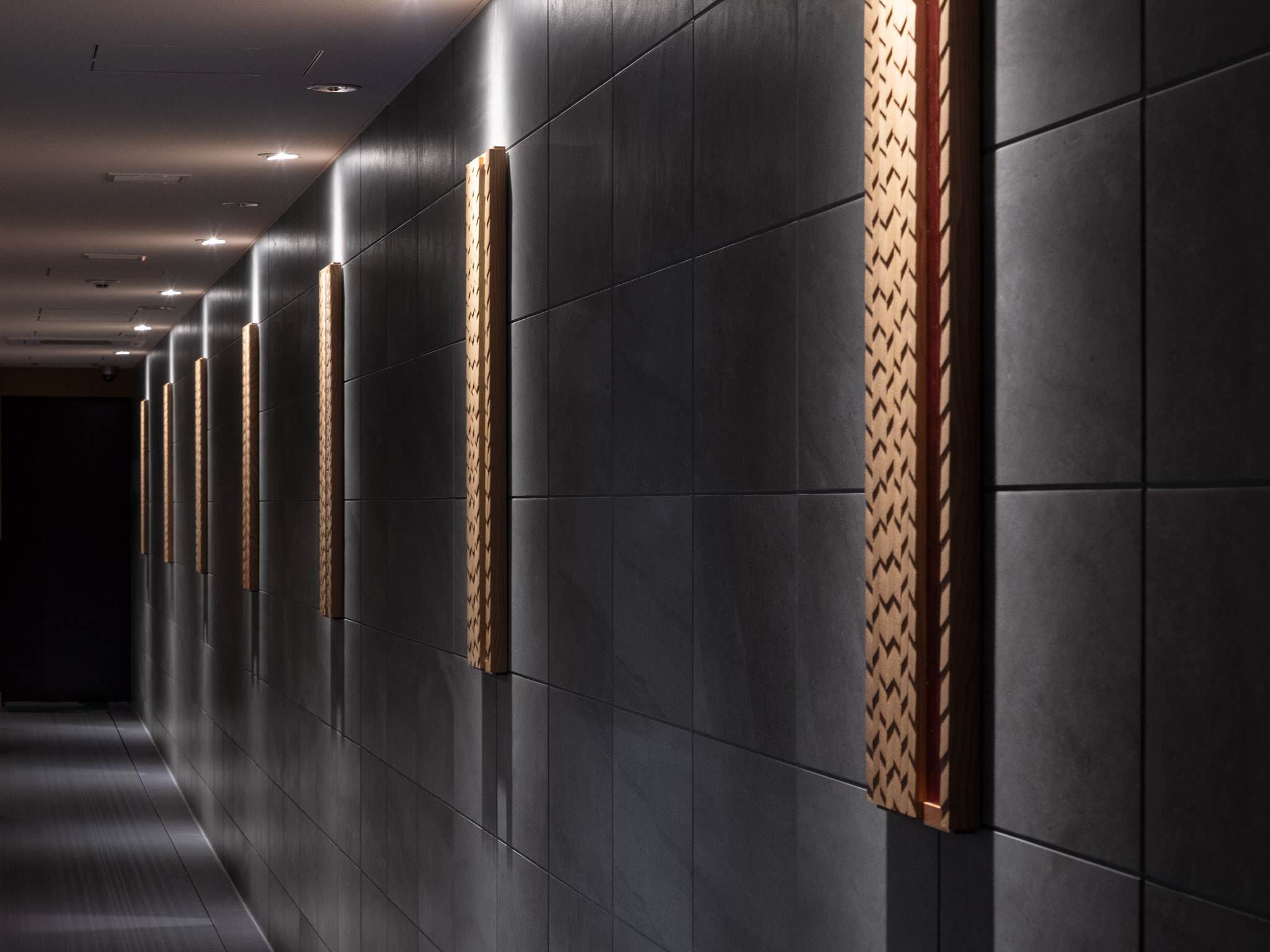Craft Art Panels

Memories of the Ancient Capital" is an art panel that decorates the lobby of a new building in Nara. As a spatial presentation to express the history and elegance of Nara, the ancient capital of Japan, we took advantage of the storytelling potential of traditional crafts.
The colors of kawara (roof tiles), tanshu (reddish-blue), and mukashu (greenish-blue), which symbolize the streetscape of Nara in the Tempyo period, are represented by Nara kawara (roof tiles) and yakifoil, respectively. These are sandwiched between the Nara latticework of chestnut wood, which symbolizes the streetscape of Nara in the Edo period. The layers of the Edo period are superimposed on the layers of the Tenpyo period, and by viewing them from the present day, the work represents the accumulation of history that connects the ancient, the modern, and the contemporary.
Materials produced by several traditional craftsmen are combined to create a story of Nara's history and style. The roof tiles are produced by a Nara tile maker whose foundation dates back to the Tempyo period, the chestnut wood, known as tsukinomi, is manufactured by craftsmen in Osaka, and craftsmen for foil stamping and woodworking are arranged, assembled, and finished to form seven craft art panels.
This kind of storytelling is one of the specialties of traditional crafts, and we are working to express various regions, cultures, and concepts.
| Title | Craft Art Panels |
|---|---|
| Date | 2023.08 |
| Theme | Art Panels / Interior |
| Techniques | Woodworking, Kawara tile making, Naguri chisel finish, foil stamping, coating |
| Materials | Natural chestnut tree chisel finish / custom tile / acrylic / zelkova / plywood / hanging bracket |
| Client | Yosuke Inui |
| Design | Yosuke Inui |
| Photography | Hiroshi Ohno |
Integrated traditional materials and techniques
Traditional crafts created by artisans from various regions, such as Nara, Osaka, Kyoto, and Hikone, are combined into seven art panels. It is so rare to integrate and assemble such a diverse range of traditional crafts. We worked with the designers to understand features of each traditional material and how to deal them with a high degree of precision, or while allowing room for the combination of materials.
The backs of the panels are reinforced with plywood to maintain their strength, as they will be on display for a long period of time. Painting and other finishing touches were also done by professional craftsmen.
Woodworking
Working with unfinished wood is an important initial process for creating the foundation or frame of a product.
Woodworking at INOUE is based on the exacting quality found in the traditional arts that have been cultivated by the production of Buddhist altars in the castle town of Hikone since the Edo Period (1603-1868 CE). Craftsmen produced these altars by hand and without nails, demanding uncompromising quality in the careful selection of the best materials for use in mortise and tenon construction. These altars are durable enough to be handed down through many generations. Furthermore, we have connections with woodworking shops in other areas that specialize in mass production, allowing us to select the appropriate methods of woodworking for any project.Gold plating (Hakuoshi, hakuhari, or hakuoki)
Hakuoshi is a decorative technique for covering items with gold or silver leaf or platinum foil.
While the material is called “gold leaf,” it includes a variety of types. These range from gold with a high degree of purity to silver admixtures that allow for an adjustment of the foil’s color. Techniques for applying the gold leaf include methods that bring out the luster of the foil as well as methods that create an elegant or refined appearance.
At INOUE, veteran craftsmen employ a wide variety of methods for gold leaf application. We have also developed techniques for the application of gold leaf to modern materials, such as acrylic resin and glass.